ArtMarket® Insight - what's trending on the art market
ArtMarket® Insight contents
Key figures and best auction results in the first quarter of 2024 [19 Apr 2024]
The art market began 2024 with unusual calm. The auction stats for the first quarter show a high-end market operating at an even slower pace than in the last quarter of last year. Artprice’s latest Annual Art Market Report discusses the causes and effects of this trend. Today, as we move into spring, we can […]
Gustav Klimt: Portrait of Miss Lieser [12 Apr 2024]
A magnificent rediscovery On 24 April, Vienna’s Kinsky auction house will be offering a rediscovered painting by Gustav Klimt, Portrait of Miss Lieser (1917). Kept secretly by some private Austrian owners, the painting was thought to have been lost for almost a century. The rediscovery of this large female portrait, one of Klimt’s best portraits […]
Art Paris 2024: How did it go? [12 Apr 2024]
The 26th edition of Art Paris closed its doors on Sunday April 7 after welcoming nearly 70,000 visitors to the ‘ephemeral’ Grand Palais. Next year (spring 2025) this major Modern & Contemporary art fair will return to the renovated Grand Palais. Despite a lower attendance compared with the 2023 edition (notably due to the Paris […]
Barbara Hepworth: one of the world’s top selling women artists [09 Apr 2024]
By becoming the second most valuable woman sculptor after Louise Bourgeois, Barbara Hepworth also establishes that more than 10 female artists now exceed $10 million at auction. At 17, Barbara HEPWORTH was already determined to become a sculptor and she went to study at the College of Art and Design in Leeds on a scholarship. […]
The Artprice100© index was up 1.55% in 2023 [08 Apr 2024]
The simulated portfolio put together by Artprice to evaluate the annual performance of a weighted investment in the world’s 100 top-selling blue-chip artists on the global art auction market continued to grow with an overall return on investment of 1.55 % between January 1, 2023, and December 31, 2023. The portfolio’s yield in 2023 was […]
Warhol+Basquiat: perhaps a new record for a joint work… [05 Apr 2024]
Currently on display at Sotheby’s in Hong Kong, a collaborative masterpiece between Andy Warhol and Jean-Michel Basquiat is attracting a lot of attention. Dating from 1984, the painting will be presented in London on April 11 & 12 before returning to New York to be auctioned in May. Measuring 295 x 420 cm, this imposing […]
Rise of Indian artists: the case of Sayed Haider Raza and the latest New York results [02 Apr 2024]
The Indian art market is flourishing! After an unusually high level of art auction turnover in India during 2023, the country’s artists are fetching exceptional results in France and the United States, where Sayed Haider Raza has just renewed his auction record. Artprice’s latest global art market report identifies India as the “surprise of the […]
Richard Serra, a master of the gigantic [29 Mar 2024]
Richard Serra, a leading figure in Contemporary sculpture, passed away on 26 March 2024 on Long Island, near New York, just two months after the death of Carl André, another emblematic figure of American 1960s minimalism. Recognized as one of the most famous living sculptors in the United States, Richard Serra was honored with the […]
Saving Banksy works slated for destruction: does it make sense? [26 Mar 2024]
Sponsored Article An international superstar, BANKSY is one of the most politically engaged and popular artists of our time with over 12 million followers on his Instagram account. His works, both humanist and satirical, are visible to passers-by around the world, on walls and facades, and for several months, on ruins around Kyiv. Banksy – […]
Paris: a unique marketplace for drawings [22 Mar 2024]
The French art market is one of the largest in the world for artworks on paper, not only at auction, but also via the unique drawing fairs and exhibitions that are hosted in Paris every spring, accompanied by a string of specialized auction sales. At auction and on a global scale, the drawing market generates […]
The French art market looks buoyant ahead of Art Paris [19 Mar 2024]
Since Brexit Paris has been re-emerging as a key marketplace for Modern and Contemporary art, laying the foundations for the international promotion of French artists: Art Paris, of which Artprice is a loyal partner, is participating in this effort along with BNP Paribas. Our latest global art market report – The Art Market in 2023 – […]
London sales: main results [15 Mar 2024]
A week after London’s first major – and highly anticipated – fine art auction sales of the year, Artmarket by Artprice looks at the sales’ most notable results, which were, overall, solid enough to reassure the art market. Sotheby’s On March 6 and 7, Sotheby’s evening sales of Modern and Contemporary art, including their ‘The […]
Joan Mitchell: more than ever in demand [12 Mar 2024]
A poetry and nature enthusiast, Joan Mitchell was one of the first internationally recognized female artists in the middle of the last century, and her current success is particularly emblematic of the revaluation of women artists. Born in the United States to a poet and an art-enthusiast doctor, Joan MITCHELL (1925-1992) hesitated for a while […]
THE ART MARKET IN 2023 [07 Mar 2024]
Artprice by Artmarket.com & ARAA (Artron Research Academy of Arts) In 2023 global art auction revenue shrank with a loss of momentum at the market’s high-end; but behind this relatively predictable decline, the auction world threw up a number of surprises and plenty of reasons to remain optimistic. Our 2023 Art Market Report Report provides […]
Hokusai featured in New York [05 Mar 2024]
A year after Christie’s hammered a record $2.75 million for a print of Hukosai’s Great Wave off Kanagawa, the same auctioneer is putting Hokusai in the spotlight of its spring sales with an exceptional set of Thirty-Six Views of Mount Fuji to be sold on 19 March during Asia Week in New York. HOKUSAI’s Great […]
Flash news: Fernando Botero, Françoise Gilot and David Hockney in the next sales [01 Mar 2024]
Eleven works by Botero at auction This is an exciting time to be buying or selling works by the great Colombian artist Fernando BOTERO who died last September. In 2023, he was ranked among the world’s 50 best-performing artists at auction with sales of almost $39m including a new personal best of $5.1m achieved last […]
Julie Mehretu in the world’s Top 100 [27 Feb 2024]
At 52, the Ethiopian-born artist became one of the world’s top 100 in 2023 A gifted drawer as a child, Julie MEHRETU began to dream of being an artist at Kalamazoo College, a small art school in the American Midwest. Michigan is now home to this budding artist, born in Addis Ababa, Ethiopia. When she […]
Art Karlsruhe opens its doors [23 Feb 2024]
For this year’s edition of the not-to-be-missed German fair Art Karlsruhe (22-25 February 2024), its new director Kristian Jarmuschek answers all of the Artmarket team’s questions. What is the state of the art market in Germany? What are the strengths of the country’s largest artistic centres: Cologne, Berlin and Karlsruhe? The art market in Germany […]
Tribute to Günter Brus, last representative of Viennese Actionism, who has died at the age of 85 [20 Feb 2024]
After the death of Hermann Nitsch in 2022, we have now also lost Günter Brus – the last representative of Viennese Actionism – who died on 10 February 2024 at the same time as a retrospective exhibition of his work celebrating his 85th birthday at the Günter Brus Museum (the ‘Bruseum’) in the eastern Austrian […]
The Outsider Art Fair returns with Creative Growth as guest of honor [16 Feb 2024]
Outsider Art Fair (OAF), the only fair dedicated to self-taught artists, is preparing to open its 32nd edition in New York. The event will run from February 29 to March 3, 2024 at the Metropolitan Pavilion in Manhattan with 63 exhibitors from 32 cities in eight countries. Since its inception in 1993, the Outsider Art […]
Carl Andre: tribute and controversy [13 Feb 2024]
A few weeks ago, Carl André, a major figure in the Minimalist Art movement but tried for the murder of Ana Mendieta, died at the age of 88.. In the press release announcing Andre’s passing, the Paula Cooper Gallery (with whom the artist had worked since 1964) recalls that “Carl Andre redefined the parameters of […]
Flash News: Hauser and Wirth in Hong Kong; masterpieces by Magritte and Klimt soon up for auction [09 Feb 2024]
The attraction of Hong Kong continues to grow with Hauser and Wirth opening a new outlet in the city In March 2023, the auction house Phillips inaugurated its new Asian headquarters in a superb building in Hong Kong, a vibrant market hub whose overall turnover from art auction sales has tripled in fifteen years. This […]
Mixed start to the year in New York for Old Masters [06 Feb 2024]
Religious subjects, battle scenes, still lifes, portraits… Sotheby’s and Christie’s hosted their first major New York sales of 2024 last week, dedicated to Old Master artworks. Not easy to predict the reception of precious works by Old Masters… From one day to the next, the market has been sending contradictory signals, achieving very satisfactory results […]
Marc Chagall at the Pompidou Center [30 Jan 2024]
The eminent Franco-Belarusian painter Marc CHAGALL is currently the subject of an exceptional exhibition at the Pompidou Center in Paris. Titled Chagall à l’œuvre, the exhibition highlights a set of works that was donated to the museum in 2022 by the painter’s granddaughters, Bella and Meret Meyer. It includes 127 drawings, 5 ceramics and 7 […]
NFTs, chaos in the art world: the must-see Arte documentary [26 Jan 2024]
“Non-Fungible Tokens – or NFTs as they are known – promise to transform the art market: fewer intermediaries, more money for artists, fewer barriers to entry for collectors. […] Let me guide you through the labyrinth of future possibilities”… says the artificially generated female voice that kicks off the new documentary broadcast by the Arte […]
Aili Jia, new star of Chinese art [24 Jan 2024]
Major collectors of Contemporary art who follow the Gagosian closely will undoubtedly be familiar with the work of Aili Jia, who, this year, was among the 200 most successful artists on the global auction market (all creative periods combined). We take a look back over the extraordinary rise of this 45-year-old artist who was born […]
Nominees for the 2024 Marcel Duchamp Prize [16 Jan 2024]
The ADIAF – host organization of the annual Marcel Duchamp Prize (a key event in France’s Contemporary art sphere) – announced its 4-artist shortlist for 2024 last week at Artcurial. Endowed with 90,000 euros, including a prize of 35,000 euros for the winner (to be announced on 17 October 2024), this award puts the nominated […]
The 3 male artists under 40 in 2023 [12 Jan 2024]
The world’s best fine art auction result in 2023 in the category of artists born after 1983 goes to Matthew WONG’s River at Dusk (黃昏的河流) which fetched the exceptional result of $6.66 million at Sotheby’s Hong Kong. Three years ago, the same work was acquired at Phillips for $4.7 million, also in Hong Kong. While Matthew […]
The best results in the Modern art segment in 2023 [09 Jan 2024]
Picasso, Klimt, Bacon, Rothko, Kandinsky, Magritte and Modigliani… the market for Modern art is undeniably the segment most likely to trigger the most spectacular auction results, and the only segment capable of generating no less than 16 results above 100 million dollars (in 2023) for works by the most famous artists born between 1860 and […]
Three women artists under 40 on the art market in 2023 [05 Jan 2024]
Three women – whose work redefines what we already know about abstraction and figuration – are already eliciting 7-digit auction results (in USD) although they are only in their thirties. While the reputation of the galleries supporting them has clearly played a role in the explosion of their prices on the secondary market, the singularity […]






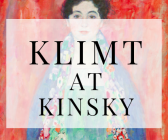


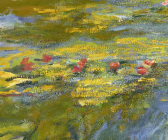
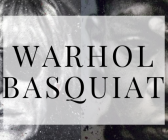



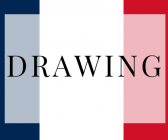
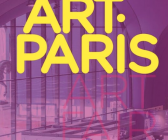


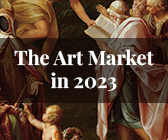









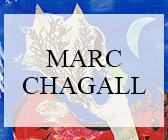




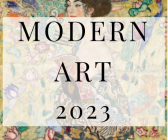









 0
0
